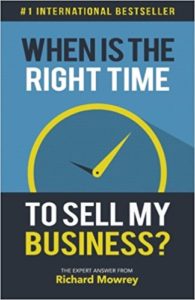Don’t Let Key Employees Hijack Your Exit Strategy
In building a successful company, owners usually invest in hiring and developing managers and key contributors that become vital to the company’s effective operations. These people are considered “key employees”. When the time comes for the owner to exit his or her business, these key employees are usually valuable “assets” in the eyes of potential buyers. Unfortunately, if a business owner has failed to take certain steps, key employees can derail a successful sale or ownership transfer.
Here are some observations and suggestions with respect to key employees that can help enable a successful exit:
- Ask all employees to sign a multi-year non-compete and non-solicitation agreement. While not always enforceable, they make employees pause and potential buyers more comfortable.
- Ensure your key employees are sufficiently incentivized to facilitate rather than undermine your exit. For example, grant minority shares, stock options or stock appreciation rights, or offer them stay bonuses so they would profit from a sale.
- Cross-train your key people to reduce reliance on single individuals. And if your business can afford it, develop a bench of qualified staff beneath key employees so someone can step up should an unexpected vacancy occur.
- Carefully decide when and how much of your plans to divulge to key employees. Employees often react negatively to the prospect of a company being sold and may start seeking employment elsewhere. Assuming you’re planning to sell to a third party, most owners wait as long as possible to inform key employees of your plans, and, when you do, give them only the information they need. If possible, assure them they will be valued and wanted by the new owners. If the terms of the intended sale don’t allow you to do that, be ready to offer key employees a stay bonus that extends beyond the sale closing.
- Involve an exit planning advisor who can help you position your company for a successful management transition. He or she can help you build transferable enterprise value, minimize key person risks and discounts, and avoid many common pitfalls along the way.
Click on this link to read a tragic key employee sabotage story: When Key Employees Stall Your Exit
Could this happen to you? Don’t take chances with your retirement!
For further information on incentivizing key employees or for help with an exit strategy, M&A or business valuation, feel free to contact Jim Leonhard at 916-800-2716 or jhleonhard@exitstrategiesgroup.com.

 Owner Attributes
Owner Attributes Buy-sell agreements that contain a clause that values stock at less than fair market value can be disregarded for tax purposes. It is important to consider the requirements of
Buy-sell agreements that contain a clause that values stock at less than fair market value can be disregarded for tax purposes. It is important to consider the requirements of 
 I thought would share this brief Forbes article that came across my transom early this morning. I generally agree with author John Warrillow’s comments on Strategic versus Financial buyers. If your goal is to maximize value and liquidity today, and you’re not looking for an equity partner to help you build longer term enterprise value, a strategic buyer generally produces the best outcome. Having multiple strategic buyers at the negotiating table as a result of a structured M&A sale process produces even better results!
I thought would share this brief Forbes article that came across my transom early this morning. I generally agree with author John Warrillow’s comments on Strategic versus Financial buyers. If your goal is to maximize value and liquidity today, and you’re not looking for an equity partner to help you build longer term enterprise value, a strategic buyer generally produces the best outcome. Having multiple strategic buyers at the negotiating table as a result of a structured M&A sale process produces even better results! Several years ago I had the opportunity to work on an acquisition assignment for Mitsubishi Electric, one of the multinational business units of the Mitsubishi group of companies. While doing research to better understand my client’s organization, I found an inspiring article that quoted Tachi Kiuchi, Mitsubishi Electric’s managing director at that time…
Several years ago I had the opportunity to work on an acquisition assignment for Mitsubishi Electric, one of the multinational business units of the Mitsubishi group of companies. While doing research to better understand my client’s organization, I found an inspiring article that quoted Tachi Kiuchi, Mitsubishi Electric’s managing director at that time…

